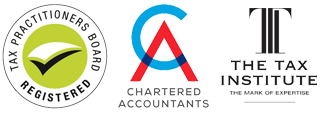Under the code Landlords are prohibited from terminating leases or calling on the tenant’s security.The scheme will implement a combination of rental waivers and rental deferrals for commercial tenants.
Landlords will be required to reduce lease payments in proportion to the reduction in the Tenant’s business revenue.
The waiver is the reduction in the rent payable, and has to be a minimum of 50% of the percentage decline in the revenue of the business. This does not have to be repaid.
The deferral, that is the rental payments that will need to be made (ie. caught up) at a later date, must be spread over the remaining time on the Lease or a minimum of twenty four months, whichever is the greater at the end of the pandemic.
If a tenant has less than twenty four months on the Lease, for example three months, they would still have at least 2 years to make any deferred rent payment.
There will be a binding Mediation Amendment code rolled out in each State and Territory to deal with any disagreements.
Let’s give three examples of how this code may apply.
Example 1
Johnny runs a fruit and vegetable shop at a large shopping centre. He has seen a decline in trade due to the lessening numbers of people attending the shopping centre. The decline has been approximately 20%.
Johnny is not eligible for JobKeeper but would like to talk to his Landlord about a reduction in rent.
In Johnny’s case the code would not be applicable to him and any negotiation will need to be done directly with the Landlord and subject to the existing Lease.
Example 2
Mark runs a gym. Mark has had to shut his gym due to the Coronavirus crisis.
Mark has started offering online programs which means his revenue has not decreased by 100% but has decreased by 70%. Mark pays $10,000 a month in rent for his gym.
Under the code, Marky Mark will be entitled to pay the Landlord only $3,000 per month during the “hibernation” period (ie. $7,000 per month reduction, based on 70% turnover reduction x $10,000 a month original rent).
Once the “hibernation” period has ended, Mark will be required to pay back the deferred amount i.e. 50% of the reduction to the Landlord above of $7,000 per month) over a period of no less than twenty four months. In Mark’s case this being $3,500 per month.
Overall rent saving /waiver to tenant is 35% of the original rent payable during the pandemic period (based on 50% share of the percentage decline of 70% in the revenue of the business).
Example 3
Anna runs a childcare centre. Anna’s revenue has dropped by 50% due to the Coronavirus crisis.
Anna is entitled during the period of “hibernation” to pay her Landlord only 50% of the rent. Anna currently pays $20,000 per month and is therefore only required to pay $10,000 per month during the hibernation period (ie. $10,000 per month reduction, based on 50% turnover reduction x $20,000 a month original rent).
Once the hibernation has ended, Anna will be required to pay $5,000 per month that was the deferred amount (ie. 50% of the reduction to the Landlord of $10,000 per month) over a period of not less than twenty four months.
As an example, if the hibernation period goes for six months, her waived rent would be $30,000 (6 months x $5,000 per month) her deferred amount would also be $30,000. Upon resumption of normal trade she may repay her rent as follows:
• $20,000 per month plus the deferred amount over a period of twenty four months being $1,250 per month, so that she pays $21,250 per month.
Overall rent saving /waiver to tenant is 25% of the original rent payable during the pandemic period (based on 50% share of the percentage decline of 50% in the revenue of the business)
VARIATION OF / AMENDMENDMENT TO LEASE IS REQUIRED
In relation to all the above examples we believe it is CRITCIAL that any agreement reached be in writing and signed by both parties so that all parties have a document to rely on in the future.
Our recommendation is that this is done by way of a Deed of Amendment to the Lease or an Agreement to Vary the Lease drafted by a Qualified Lawyer.



 ATO JOBKEEPER AUDIT TARGETS
ATO JOBKEEPER AUDIT TARGETS 